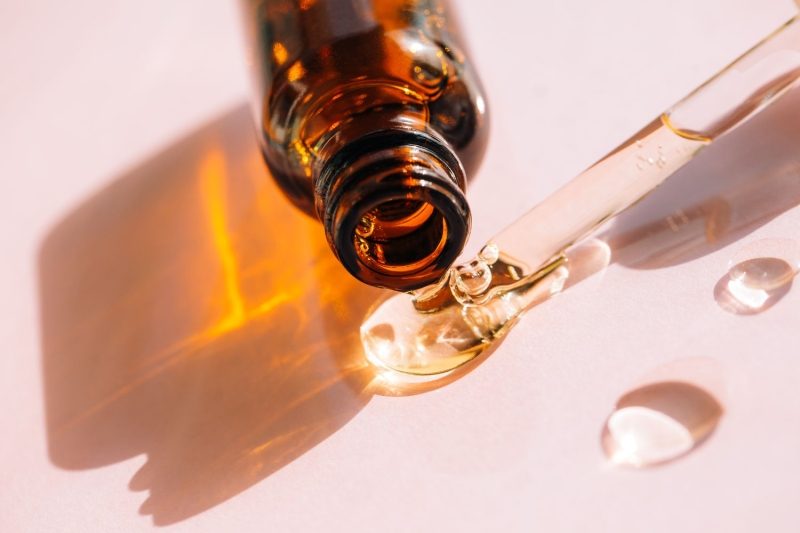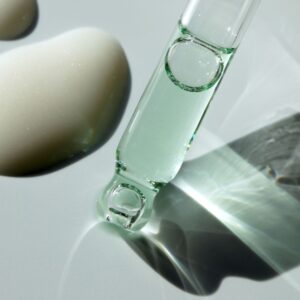
Potential Side Effects Can You Combine Them? The Final Takeaway
The thought of using skincare acids might sound intense at first, but salicylic acid and glycolic acid can work wonders for your skin, so you might just want to give them a chance. Both are standout exfoliators, but you might use them for different reasons. Glycolic acid tends to be great on the surface, helping with dryness, removing dead skin, addressing fine lines, and enhancing your glow. Meanwhile, salicylic acid helps clear pores, reduce oil production, and treat acne. Some people even use both, depending on their skin’s needs. Read on to learn more about glycolic and salicylic acid, from the difference between them to the benefits and how to best incorporate them into your skincare routine.
What Is Glycolic Acid?
“Glycolic acid is a type of alpha hydroxy acid (AHA), a group of natural plant and animal-derived acids that are commonly used for skin conditions such as acne, dryness, and aging skin,” says board-certified dermatologist Melanie Palm, MD. “Due to your natural skin cell cycle slowing down as you age, dead skin cells can accumulate, making your complexion look [more] dull.” She says that you can apply glycolic acid to exfoliate and remove the top layers of dead skin cells, making way for your skin to generate new skin cells.
Board-certified physician Lori Aliksanian, MD, says to think of glycolic acid as a light, gentle chemical peel. "It brightens the skin and can help remove superficial pigment from sun damage as well as reduce the appearance of fine lines," she says.
What Is Salicylic Acid?
“Salicylic acid is a beta hydroxy acid (BHA) that has been used for over 2.000 years to chemically exfoliate the skin,” Aliksanian says. “Topical preparations can be naturally derived from willow bark or chemically derived.” Board-certified dermatologist Dendy Engelman, MD, adds that it works inside your pores to shed the top layer of skin, preventing them from becoming clogged.
Benefits and Uses
Glycolic Acid
Glycolic acid has many potential benefits, with a few of the main ones being as follows:
- Helps with dryness: Glycolic acid has the ability to help eliminate dry, flaky skin, leaving you with a smoother complexion.
- Evens and brightens tone: The exfoliating properties of glycolic acid mean it can be helpful in reducing uneven tone and boosting brightness and glow.
- Reduces the appearance of fine lines: With the increased cell turnover that occurs when using glycolic acid, you might find that signs of aging including fine lines are less noticeable.
- Reduces dark spots and hyperpigmentation: "It can also improve hyperpigmentation and fade dark spots," Engelman says.
Salicylic Acid
Like glycolic acid, salicylic acid has many benefits in the skincare department:
- Clear skin and unclog pores: “Salicylic acid is commonly used to gently exfoliate the skin, unclog pores, clear out dead cells, and treat acne,” Engelman says.
- Evens tone and texture: Just like glycolic acid, salicylic acid can reduce the appearance of fine lines and wrinkles, as well as have a brightening effect, according to Engelman.
- Regulates oil production: If you have acne-prone skin, salicylic acid can help improve it over time in addition to treating current breakouts, as Engelman tells us that it can regulate excess sebum production.
Which Skin Types Should Use Each?
Glycolic Acid
Glycolic acid is a good option for people with normal, combination, and oily skin types. It’s generally well-tolerated, but it can cause irritation for those with sensitive skin. When you first start using glycolic acid, it’s normal to experience a bit of itching or irritation as your skin adjusts.
"Those with acne-prone or dull skin types are more likely to benefit from incorporating glycolic acid into their skincare routines," Palm says. "People with psoriasis, eczema, rosacea, or sensitive skin types may find glycolic acid too irritating, so I always recommend patch-testing a new skincare ingredient or product before applying it all over your face or body."
Salicylic Acid
Salicylic acid is generally safe for all skin types, but it tends to work best for oily, acne-prone skin. This is because of its ability to unclog pores, balance sebum production, and reduce breakouts. Salicylic acid can sometimes cause irritation for people with particularly dry or sensitive skin or who are prone to eczema, rosacea, or psoriasis.
"Like any other exfoliating product, people with sensitive or extremely dry skin should start slowly with low concentration preparations to see how their skin tolerates it," Aliksanian says. Additionally, if you're pregnant or breastfeeding, Palm emphasizes that it's important to check with your doctor before using products that contain salicylic acid.
Potential Side Effects and Precautions
Glycolic Acid
Some of the most common side effects you might experience when using glycolic acid include mild irritation, slight itching, and sensitivity. Typically, these types of reactions subside after using the product a few times. "If you’re experiencing any side effects beyond [this], glycolic acid may not be for you," Palm says. As when trying any new skincare product, it's important to slowly introduce glycolic acid into your skincare routine to see how your skin reacts.
“Glycolic is gently stripping off that top layer of dead skin cells, so treat your freshly exfoliated skin gently,” Aliksanian says. “People on retinol should be cautious when using glycolic acid, as their skin is already being exfoliated.” To avoid irritation, Engelman suggests alternating when you use retinol and when you use glycolic acid. “If you want to use both products, use retinol at night and glycolic acid in the morning,” she says.
Protecting your skin from the sun is a must, as well. "Glycolic acid makes your skin more photosensitive, so it’s important to diligently apply a sunscreen with an SPF of 30 or above daily and avoid direct sunlight if possible," Palm says.
Salicylic Acid
Similar to glycolic acid, you might experience side effects like dry, irritated, red, or itchy skin as your skin adjusts to using salicylic acid. According to Aliksanian, thoroughly moisturizing your skin after a salicylic acid peel can minimize these side effects. "If your skin is extremely sensitive, you may want to try incorporating salicylic acid with a moisturizer, or use it at a lower concentration," Engelman says. If side effects worsen, she suggests getting in touch with your dermatologist.
Salycilic acid can increase your sensitivity to the sun, so it's important to wear SPF 30 or higher every day, even if it's cloudy. "In addition to diligent SPF application, I wouldn’t recommend applying a salicylic acid treatment more than three times a week, as it can cause irritation and compromise your skin barrier," Palm adds. "Keep in mind [that] the type of product you use impacts matters, too. Serums and toners may have a heavier concentration of salicylic acid versus a cleanser." Also, if you have an aspirin allergy, you should avoid salicylic acid because the acid is in the aspirin family.
Can You Combine Glycolic and Salicylic Acid?
Generally, glycolic and salicylic acid are safe to combine—just pay attention to how your skin reacts and don't overdo it. "If your skin can tolerate it, using glycolic acid and salicylic acid together can be a powerful duo in minimizing and treating acne while exfoliating and reversing dullness," Palm says. "That said, keep in mind you’re using two exfoliating properties at the same time—so you may experience more irritation, dryness, and redness than usual."
If you're going to combine the two, remember to start slow. Rather than jumping right into using both acids at the same time every day, she suggests applying the combination just once or twice a week to see how your skin reacts.
The Final Takeaway
Glycolic acid and salicylic acid both offer impressive benefits, and you can even work both products into your routine if your skin responds well to each. As with any product, these acids both have some potential side effects, so it's best to check with a dermatologist before trying them, especially if you have sensitive skin or conditions like rosacea and eczema. Be sure to start slow and consult with a doctor if any concerning reactions occur, but generally, both of these products are safe to use across a range of skin types and can make a notable difference in tone and texture, acne, anti-aging, and more.
Article Sources Byrdie takes every opportunity to use high-quality sources, including peer-reviewed studies, to support the facts within our articles. Read our editorial guidelines to learn more about how we keep our content accurate, reliable and trustworthy.
-
Tang SC, Yang JH. Dual effects of alpha-hydroxy acids on the skin. Molecules. 2018;23(4):863. https://www.ncbi.nlm.nih.gov/pmc/articles/PMC6017965/
-
Paterson JR, Lawrence JR. Salicylic acid: a link between aspirin, diet and the prevention of colorectal cancer. QJM. 2001;94(8):445-448. https://pubmed.ncbi.nlm.nih.gov/11493722/


